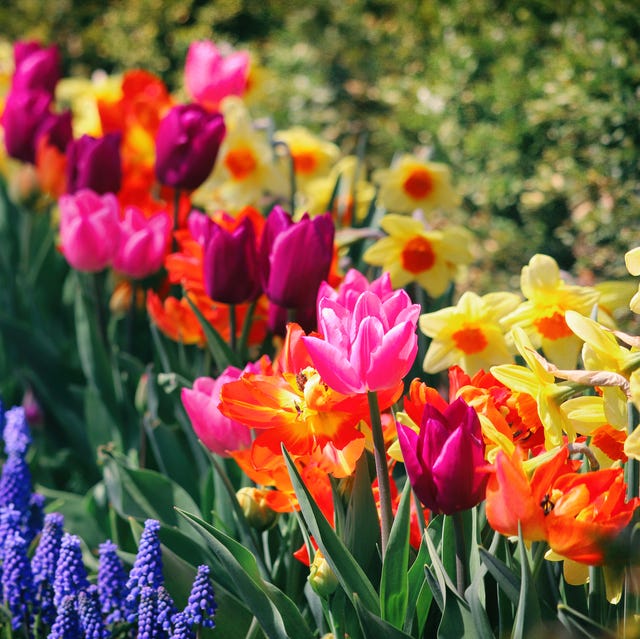Large, vibrant flowers can instantly transform your garden into a show-stopping paradise. From towering sunflowers to bold hydrangeas, big blooms add drama, color, and charm to any outdoor space. But growing them successfully requires a bit of knowledge and strategy. In this guide, you’ll learn how to grow smarter with big flowers, ensuring they thrive and become the centerpiece of your garden.🌷 IntroductionBig flowers aren’t just beautiful — they’re a statement. Their size can draw the eye, provide shade for smaller plants, and create a dynamic garden landscape. However, these blooms often need more attention than smaller varieties: proper soil, sufficient sunlight, support structures, and careful watering.By following these practical tips, you’ll learn how to cultivate healthy, giant flowers that impress all season long.🌿 Choosing the Right Big FlowersSome flowers are naturally larger and easier to grow, while others require specific conditions. Popular big flower options include:Sunflowers: Tall, cheerful blooms perfect for sunny spots.Hibiscus: Tropical flowers with large, colorful petals.Peonies: Fragrant, full blooms ideal for temperate climates.Dahlias: Dramatic flowers with varied colors and petal shapes.Hydrangeas: Big clusters of blooms, great for borders or focal points.🌞 Tip: Choose flowers suited to your local climate for best growth.🧑🌾 Step 1: Prepare the SoilBig flowers need nutrient-rich, well-draining soil to support their size.Loosen soil to a depth of 12–18 inches.Mix in compost or organic fertilizer to improve fertility.Ensure the soil pH matches your flower type (most big flowers prefer slightly acidic to neutral soil).🌞 Step 2: Planting TipsSpacing: Give each plant enough room to grow — crowding can stunt size.Depth: Plant seeds or bulbs at the recommended depth for each variety.Timing: Follow the recommended planting season — spring for most annuals, fall for bulbs.🌿 Tip: For annuals like sunflowers or dahlias, plant in full sun for maximum bloom size.💧 Step 3: Watering and FertilizingWater consistently to keep soil moist but not soggy. Big flowers have large roots and need more water.Fertilize regularly: Use a balanced, slow-release fertilizer. For flowering, a high-phosphorus formula promotes larger blooms.Mulch around plants to retain moisture and suppress weeds.🌿 Step 4: Support and CareTall or heavy blooms may need additional support:Stakes or cages: Help flowers like sunflowers, dahlias, or peonies stay upright.Pruning: Remove dead or weak stems to focus energy on strong growth.Deadheading: Regularly remove faded flowers to encourage more blooms.🌸 Tip: Taller flowers may also benefit from wind protection, especially in exposed gardens.🌺 Step 5: Companion PlantingPair big flowers with smaller, complementary plants for a balanced garden:Low-growing perennials like lavender or marigolds enhance the visual impact.Ground covers prevent weeds and retain moisture.Plant pollinator-friendly flowers nearby to attract bees and butterflies.🌼 Step 6: Seasonal TipsSpring: Plant bulbs and annuals for summer blooms.Summer: Water deeply and mulch to combat heat stress.Fall: Cut back perennials and collect seeds for next season.Winter: Protect tender plants with coverings or move potted flowers indoors.🌿 Practical Tips for Growing Big FlowersStart strong: Healthy seedlings grow bigger than stressed ones.Monitor soil nutrients: Big blooms need extra food — check regularly.Avoid overcrowding: Give plants space to expand naturally.Rotate crops: Prevent soil depletion and reduce disease risks.Observe and adjust: Track growth patterns and tweak watering or sunlight as needed.🌸 Why You’ll Love Big Flowers in Your GardenInstant focal point: Big blooms draw attention and create a dynamic landscape.Pollinator magnet: Large flowers attract bees, butterflies, and birds.Versatile decoration: Perfect for borders, beds, containers, or floral arrangements.High-impact blooms: A few big flowers can make more visual impact than many small ones.🌺 ConclusionGrowing big flowers is both rewarding and transformative. By choosing the right varieties, preparing the soil, providing consistent care, and giving plants enough space and support, you can grow smarter with big flowers and enjoy a garden full of stunning, dramatic blooms.From towering sunflowers to lush peonies, your garden can become a vibrant paradise that delights the eyes and supports pollinators all season long. 🌻✨

